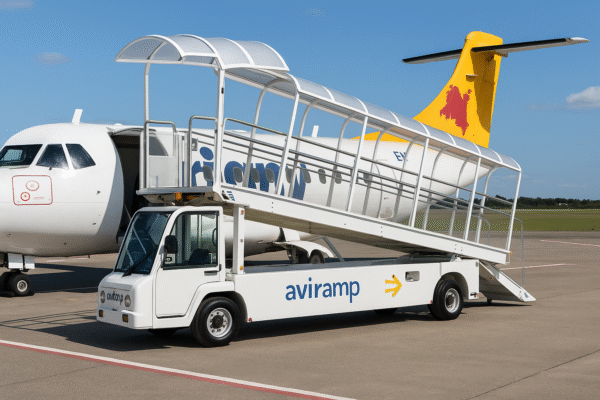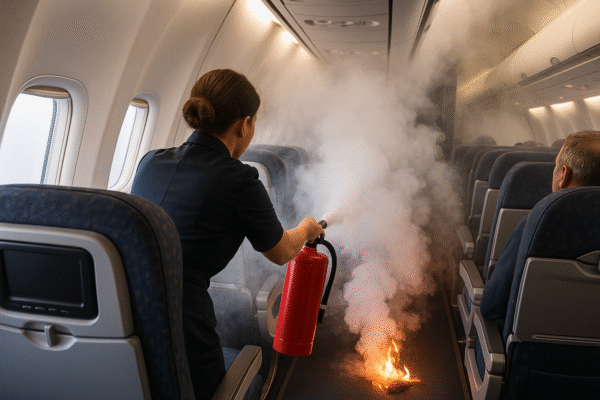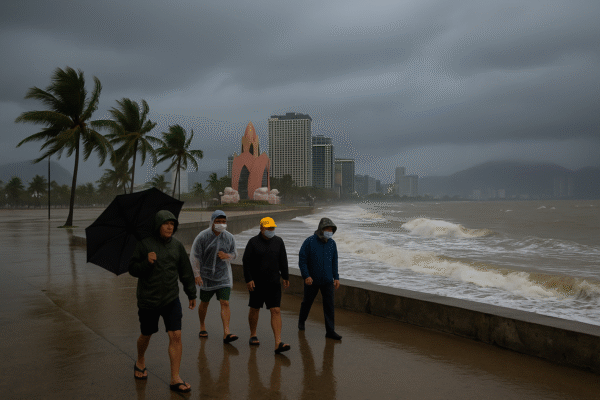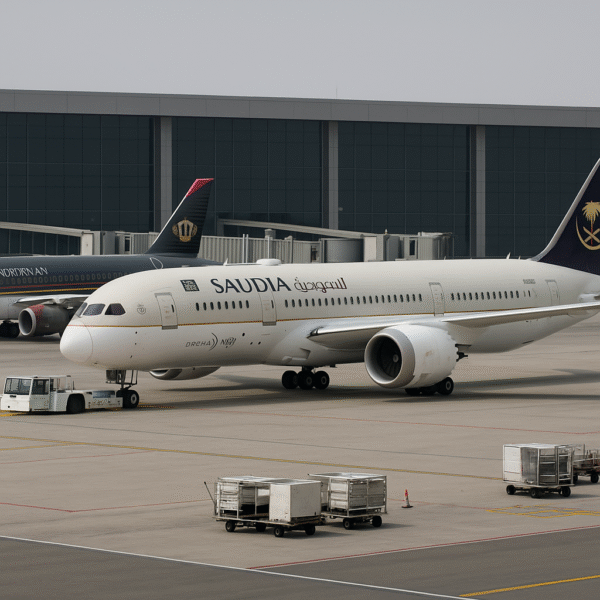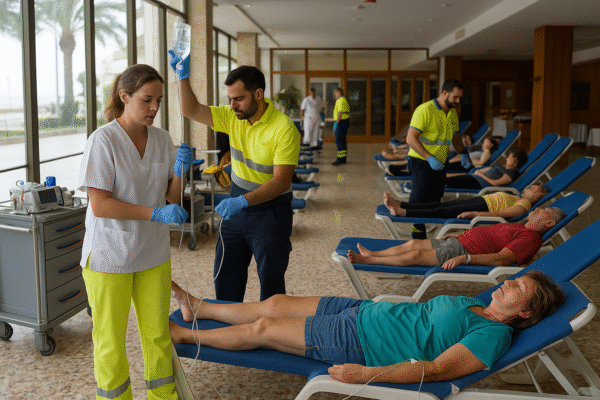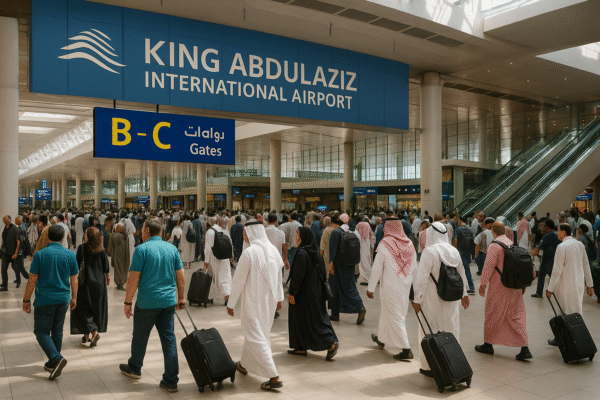JEDDAH, SAUDI ARABIA — King Abdulaziz International Airport (KAIA) in Jeddah has reached a historic milestone, processing 178,000 passengers in a single day on April 5, 2025. This all-time high underscores the airport’s expanding capacity and pivotal role as a global hub for religious tourism during peak Umrah and Ramadan travel.
The record-setting day reflects an orchestrated combination of increased flight frequencies, expanded infrastructure, and operational efficiency. More importantly, it highlights the airport’s integral role in achieving the goals of Saudi Arabia’s Vision 2030, which aims to transform the Kingdom into a premier international travel and tourism destination.
Sustained Growth in Passenger and Aircraft Movement
The first six months of 2025 have been exceptionally strong for King Abdulaziz International Airport. Passenger numbers from January to June 2025 totaled 25.5 million, marking a 6.8% increase year-on-year. Meanwhile, total aircraft movements reached 150,000, a 6.3% rise compared to the same period in 2024.
This uptick can be attributed to high seasonal demand, especially among Umrah travelers, and a growing appetite for leisure and business travel throughout the Kingdom. Airlines have responded by ramping up services, adding new international destinations, and deploying larger aircraft—especially from hubs across Asia, Europe, and the Middle East.
Carriers such as Saudia, Flynas, Emirates, Qatar Airways, Turkish Airlines, and others have expanded operations at Jeddah, further cementing its place as one of the busiest aviation centers in the Middle East.
Operational Readiness: A Major Win for Saudi Aviation
The ability to efficiently manage such extraordinary traffic—particularly on April 5—is a direct result of multi-year upgrades in terminal space, digital systems, staff training, and customer experience. KAIA’s smart technologies, including automated check-ins, biometric e-gates, and real-time baggage tracking, played a crucial role in managing crowds without disruptions.
A seamless passenger experience was delivered across every touchpoint—from immigration to customs, and from check-in counters to baggage claim. The terminal’s design, with expanded seating, retail options, and efficient signage, contributed to smoother navigation during high-density traffic periods.
Record Baggage Handling and High-Tech Systems
Supporting the surge in passenger flow is an equally impressive performance in baggage handling. Between January and June 2025, KAIA processed 29.4 million pieces of luggage, representing a staggering 11.9% increase over the previous year.
Much of this baggage volume stems from long-haul travel and the growing complexity of religious tourism itineraries. In response, KAIA has invested in automated sorting systems, enhanced RFID tracking, and AI-driven load management—all of which reduce mishandling rates and improve delivery times.
These innovations contribute to faster baggage claims, reduced delays, and higher traveler satisfaction—critical in the post-pandemic era of digital-first airport expectations.
Religious Tourism: The Beating Heart of Jeddah’s Air Traffic
Positioned as the closest major airport to the holy cities of Makkah and Madinah, King Abdulaziz International Airport is a central gateway for millions of Muslims performing Umrah and Hajj each year.
In the first half of 2025 alone, KAIA distributed 4.8 million bottles of Zamzam water to pilgrims—an iconic gesture that marks the end of a spiritual journey. Each bottle is safely packaged and conforms to airline standards, offering travelers a meaningful souvenir as they depart.
The volume of Zamzam water distribution serves as a proxy for religious visitation levels, now returning to pre-pandemic heights. It also reflects the airport’s logistical capacity to support such high-volume, spiritually significant travel without compromising service standards.
April 5: A Milestone in Saudi Aviation History
April 5, 2025, now stands as a landmark in KAIA’s operational history. Handling 178,000 passengers in one day, the airport exceeded all previous benchmarks without a single major disruption. The accomplishment demonstrates how smart coordination between airlines, airport operators, immigration, customs, and ground handling teams can produce world-class outcomes.
Behind the scenes, terminal managers, security personnel, and customer service staff worked in tandem to accommodate this surge. Their performance on this record-breaking day has been widely praised across local and international aviation circles.
A Symbol of Vision 2030’s Progress
King Abdulaziz International Airport is more than just a transportation hub—it’s a cornerstone of Saudi Arabia’s economic transformation agenda. The aviation sector is central to the Kingdom’s push to diversify revenues, attract 100 million visitors annually by 2030, and elevate its global status as a tourism and business destination.
KAIA continues to modernize with initiatives like contactless travel experiences, expanded duty-free zones, and accessibility enhancements for elderly and disabled passengers. These efforts align with Saudi Arabia’s goal of offering seamless, inclusive, and globally competitive tourism infrastructure.
Looking Ahead: A Bright Second Half of 2025
With the Hajj season approaching, passenger volumes are expected to rise even further. The government’s strategic emphasis on attracting more leisure travelers, business events, and religious pilgrims means that KAIA will remain at the forefront of Saudi Arabia’s tourism growth story.
Having successfully navigated its busiest day on record, Jeddah’s King Abdulaziz International Airport has not just marked a new milestone—it has redefined what is possible in regional aviation, offering a powerful symbol of progress and potential.
For more travel news like this, keep reading Global Travel Wire

